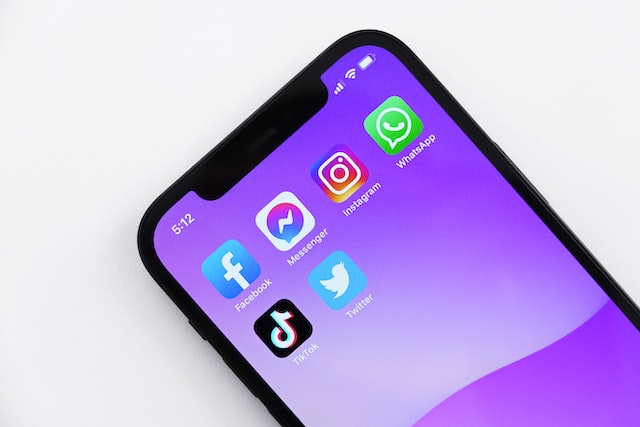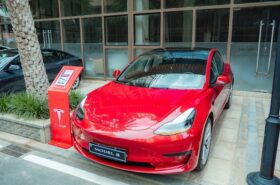If you want to reduce your carbon footprint, one of the first steps you should take is buying eco-friendly gadgets, including phones, computers, and more. The type of device you buy has an impact on your annual carbon footprint, so it is important to be careful when choosing your next smartphone. Thankfully most smartphone makers are embracing the idea of making their phones more eco-friendly or sustainable.
Creating a phone that is more sustainable is achieved by making certain choices. These choices include using recycled materials, making the phone more energy efficient, extended software updates and warranty periods and designing the phone with repairability in mind. Before we take you through the list of the most eco-friendly phones, let’s first explain why these factors are important.
Factors Affecting the Sustainability of Your Phone

Using recycled materials
Most phones are manufactured using parts made from materials, including metals and plastics. Metals and plastics are created from raw materials extracted from the earth. Mining raw materials involves using significant amounts of energy, usually from unclean sources. Transportation of these raw materials from the mining sites to the factories also involves burning fossil fuels since most trucks are powered by diesel and petrol.
These processes lead to the emission of more greenhouse gases into the atmosphere, which eventually leads to global warming. On the other hand, the energy required to recycle materials to a usable state is way lower than the total energy involved in mining and transporting raw materials. Overall, recycling is a much more sustainable choice.

Energy efficiency
A phone that uses less energy requires a relatively smaller battery and less frequent charging than inefficient ones. A smaller battery means less destruction of natural resources to get lithium and other materials used to make batteries. Besides destroying natural resources, mining and transportation of lithium require significant energy.
A phone that is energy efficient also requires less frequent charging, which lowers the number of units (KWH) spent on charging the phone each year. This alone can significantly reduce your carbon footprint if you are someone who uses your phone a lot each day.

Repairability
A phone that is easy to repair reduces your chances of upgrading if your current one gets a problem because it can easily be fixed. Smartphones today have become less repairable than ever before. For instance, if your phone’s logic board gets a problem, you will most likely have to buy a new one because smartphone logic boards are practically irreparable. Remember, frequent upgrades lead to more carbon emissions in the long term.

Warranty and software updates
When a phone is covered with warranty and software updates, users usually hold on to it much longer. Some people only upgrade to newer phones when their current one stops supporting some of the crucial apps they use on a day-to-day basis.
The Most Sustainable Phones
Fairphone 4

This is one of the most sustainable smartphones on the market right now. It is extremely easy to repair, thanks to its modular design. The different parts of this phone are not glued together, making it easy to put the phone apart if you want to replace the battery, screen, or any other faulty part. It also has very few screws, so you won’t have to open several screws while replacing parts on this phone.
Most of the components of this phone are made from recycled materials. For instance, its back cover is made out of 100% recycled plastics. The Fairphone 4 is the first phone to be Fairtrade Gold certified. The company also promises to recycle an equal amount of electronic waste for every phone to achieve the net-zero emissions goal for each phone. You will also get a 5-year warranty, allowing you to use the phone for as long as possible without being pressured to upgrade.
The only downside about this phone is its design, which looks a little outdated. Its specs are also not flagship level, so don’t expect to get the performance and fluidness of phones like the iPhone 14 Pro or the Galaxy S22 Ultra. It has the Qualcomm Snapdragon 750G, 6.3-inch Full HD+ display, duo camera set up, up to 8GB RAM and 256GB storage.
Like most phones today, the Fairphone doesn’t come with a USB cable and a power brick. However, they give you the option of buying them separately if you need them. This is done to reduce e-waste because most people buying a phone in 2022 are most likely previous phone owners that have chargers.
Overall, the Fairphone 4 is one of the ideal phones for people who really care about the environment to the level of giving the experience of using the snappy flagship and midrange devices. But if you cannot afford to give up the experience of using a flagship device, below are some options you can consider.
iPhone 13 Pro

The iPhone 13 Pro is the most sustainable phone Apple has ever made. Apple claims it is 11% more sustainable than the previous generation (iPhone 12 Pro). One of the main reasons behind the iPhone 13 Pro’s sustainability is its power efficiency. Apple’s A15 is the most powerful and most efficient smartphone chip on the market right now.
The operating system (iOS) that runs on iPhones is also optimized to use the least possible resources, even when executing relatively heavy tasks. That is why the iPhone 13 Pro, with a 3,095 mAh battery, lasts longer than most Android devices with larger batteries on a single charge.
According to the Product Environmental Report published by Apple, the iPhone 13 Pro consumes 54% less energy than the U.S. Department of Energy requirements for battery charger systems. So, the units of energy (KWH) you will spend charging your iPhone 13 Pro will be significantly reduced because of its efficiency.
Besides efficiency, several components of this phone are made from partial or 100% recycled materials. This phone uses 99% recycled tungsten, and 98% recycled rare earth elements. The packaging of the phone is also made from 100% recycled wood fiber that comes from responsible sources.
These phones also don’t come with power bricks in the box. Apple was the first to take this direction, which has now been adopted by the rest of the other smartphone companies. The only downside of the iPhone as far as sustainability is concerned is repairability. Replacing the screen, battery, or any other component of this iPhone requires several steps, which can be very hectic.
The only good news is that it is now possible to buy original parts of the iPhone direct from Apple through their self-repair program. Under this program, anyone can buy any component of their iPhone and a repair kit that they can buy or rent from Apple. Apple also provides detailed repair guides for the iPhone 13 Pro. At the moment, Apple’s self-repair program is only available in the USA, but Apple promised to expand it to more countries, starting with Europe, by the end of this year.
Another underrated sustainability feature of iPhones is the fact that Apple gives them software and security updates for over five years. For instance, the iPhone 6S from 2015 got software for over seven years. So, we should expect the iPhone 13 to get updates for the next 4 to 6 years. If you buy it today, you will be assured of running the latest iOS version for all those years.
Apple also offers one year warranty for the iPhone 13 Pro with the option of paying for their Apple Care+ repair program at $7.99/month if you need to get extra warranty coverage.
The Galaxy S22

Just like Apple, Samsung has also tried as much as possible to make its flagship device sustainable in terms of materials used, energy efficiency and more. The galaxy S22 devices are the most sustainable and eco-friendly devices Samsung has ever made. These devices use 20% recycled ocean materials that mainly include discarded fishing nets.
Regarding efficiency, Samsung has invested a lot of money in making the LTPO gen 2 displays with a refresh rate of up to 1Hz. These displays have significantly improved the battery life of the Galaxy S22s compared to previous generations of their flagship devices. It should also be noted that Samsung is one of the manufacturers of Apple’s OLED displays.
The packaging used for these devices is 100% recycled paper. Just like Apple and many other phone makers, the Samsung Galaxy S22s don’t come with a charger in the box. This allows users to use their old chargers hence reducing potential e-waste that results from users discarding their old chargers as soon they buy a new device that comes with a new one.
Samsung also falls almost in the same category as Apple when it comes to repairability. Most of the different components of this phone are glued together, making it extremely complex to put apart. The batteries are also inbuilt, so you will have to go through several steps, which include opening several screws if you replace the battery or the screen. However, Samsung’s original spare parts are much easier to find if you choose to repair the phone yourself.
Samsung offers a two-year warranty for their devices, including the Galaxy S22. Users are also assured of getting Software updates for up to 4 years. This is the longest that you can get on any Android flagship phone.
Teracube 2E

This is another affordable and eco-friendly Android device that you can buy right now. Teracube advertises this phone as the smartphone you will use for the next four years.
The company made a couple of choices to make this phone more sustainable than the average smartphone on the market.
Like all the phones on this list, this phone also uses a couple of recycled materials. It is made with 25% recycled polycarbonate and also ships with a biodegradable phone case that you can use instead of the plastic ones on the market. The phone is also highly modular, making it easy to replace parts in case you need to replace any of them.
It is one of the few phones on the market that comes with a removable battery, which you can swap out without having to open any screw. The Teracube 2E also comes with an SD card slot, so if you run out of storage in the future, you simply have to insert the SD card instead of buying a new device with new storage.
Teracube also assures users of getting up to 3 years of software updates, which is uncommon for most Android phones, especially those in its price range. This phone also comes with four years warranty, which is way beyond what more phone companies offer on their devices. Within the warranty period, users can also pay only $89 for accidental repairs that include screen damage.
Any second-hand or refurbished phone
If you want to take an extra step to save the environment, you can choose to buy a used or refurbished phone instead of a brand-new one. Buying a used phone increases its lifecycle, which lowers the demand for brand-new phones. Most companies, including Apple and Samsung, also sell refurbished versions of their phones that are often as clean and usable as the new ones.
You can also get good deals on refurbished and used phones on Amazon, eBay, BestBuy, and Craigslist. With about $400 to $500, you will be able to buy most of the flagship devices released one or two years ago. However, it is important to choose a trustworthy source, like the ones we have listed above, to avoid spending money on a used phone that is not usable.
Most of the above platforms give buyers the option to put in a complaint if they receive a product that doesn’t match the advertised condition. However, if you use peer-to-peer platforms like Facebook Marketplace, you will primarily be relying on the trust of the sellers, which is a little risky, especially if you are going to spend hundreds of dollars.



